There are some apps that are abandoned through no fault of their own. The team responsible could have moved on to other projects, or a new, redesigned app may have appeared to take its place.
If you go trawling through YouTube or even find an old PC in the family office, you can find yourself transported back to a time when the only way you could use the internet was by being sat down in front of a desk, waiting for a dial-up modem to connect.
But we're also heading into an era with the App Store and Google Play Store, where users are longing for deleted apps to make a comeback, regardless of how they may look or operate in today's world.
There’s a growing nostalgia for the apps we used to use every day. Whether it's to feel like we're back at school, or just because the app was so good that we’d like to use them again for our new Windows 11 and iPhone 13 devices in 2022. Windows Media Player coming back is a great example of this, and it's why there should be more comebacks for depreciated apps.
With this in mind, here are three apps that should see a return and a remake for 2022 to take advantage of the devices we use every day.
Vesper
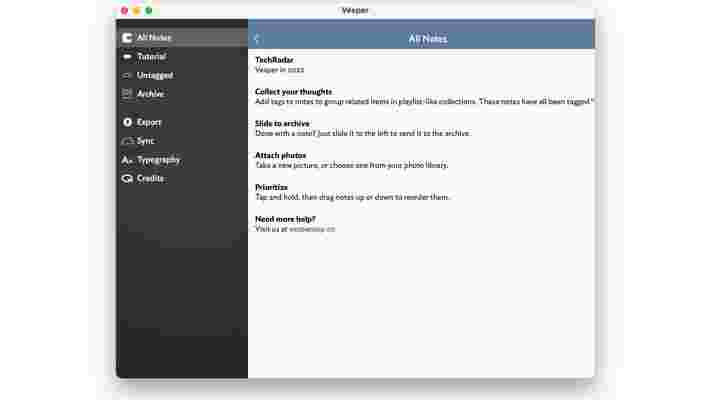
This is a note-taking app that set itself apart from the rest in the productivity category at the time.
Created by Q Branch, involving Brent Simmons , Dave Wiskus , and John Gruber , the app was launched in 2013 and then discontinued in 2016 . But thanks to the ability to redownload apps that have disappeared from the App Store, Vesper can still be used in 2022.
Vesper’s design is classically inspired by Apple's Notes app from 2013, but in a modern vibe that still looks good in 2022.
The app's purpose is simple - to take notes. But you can also tag these notes, similar to a feature that Apple brought to its own Notes app only in 2021 . You can swipe to the left to archive any notes that you don't need, and you can re-arrange them to order the notes in a way that suits your needs.
For some reason, we weren't able to redownload it for iPhone, but on an M1 Mac we could, and it still works great, even with a janky way to resize the window in only two ways.
You can't sync notes to different devices as that was shut down when Vesper shut its doors, but it's a great app to use locally on your device if you're creating one or two projects.
Since its discontinuation, the source code has been available on GitHub for someone else to make their own interpretation of the app. Using this app in 2022, we can't help but wonder if one last hurrah should occur for Vesper. One more version where the band gets back together, much like James Bond in the mid-nineties, to be relevant again but for a new civilized age.
Even in a world where we have note apps that work similarly to WhatsApp , there's still room for a Vesper, especially in an app world where we use to-do lists and collaborative efforts to jot things down for those personal projects.
To see a new, final Vesper with Widgets , a web version variant, iCloud sync, alongside the proverbial dark mode option, could be a great way for Q Branch to sign off and raise a glass to, and have it work for our modern iPhones again.
MSN Messenger
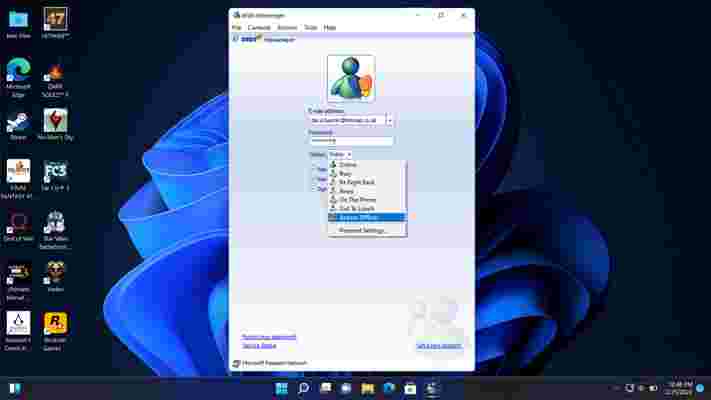
Between 1999 and 2009, Microsoft's messaging app was everywhere. You'd finish school and go straight to your parents' PC to log on to MSN Messenger, to either continue a conversation from earlier or to arrange something for later that evening.
You would log in and be greeted with a list of the contacts you've added, with many showcasing using waves of emojis and symbols placed on either side to their name for effect.
You could 'nudge' and 'wink' a friend who would be online, and you could exchange images if you wanted.
Eventually, the ability to play games with one another, alongside webcam support would be available to use, taking a strain on the 120Kbps broadband that would have been the average common internet speeds in 2003.
MSN Messenger was also arguably the first dating app before Tinder and Bumble . A small rainbow or heart next to a name would be a not-so-subtle hint on someone's name, yet it could initiate something more in the playground the next day. Messenger had something for everyone during those times, but ironically it didn't move to where apps were going.
Due to the rise of the iPhone and the App Store in 2008, Windows Live Messenger, as it was renamed to, dropped in usage, as everyone was starting to use WhatsApp, Facebook, FaceTime, and iMessage to communicate with one another, and Messenger was discontinued in 2014 .
While you can install a version of the app in Windows 11, you can only get as far as the login screen, as the server to connect to the Hotmail server has long been depreciated.
In hindsight, Microsoft didn't know what it had - it rode a wave that the company hasn't had in the messaging category since. Especially when you consider how Zoom soared in use during the pandemic while Skype was left as an afterthought.
But nostalgia is starting to seep through to apps - Windows Media Player has returned to Windows 11, and currently, there are two apps by Microsoft, Teams, and Skype that both do the same function, but not as well as Zoom.
Rebooting MSN Messenger as a service for everyone, but with business features for work, could be a big boon to many.
Imagine MSN Messenger as an app for iOS and Android, alongside Windows 11, macOS , and Chromebooks. With Microsoft's aim of making apps available on as many systems as possible Messenger is the next logical step.
One that can bring back the nudges, the winks, and themes to bring the look of 2022 back, could be appealing to many, while the features are useful to others.
Microsoft is in a bind with Skype and Teams . Making a fresh start with an app that users have nostalgia for, but rebuilt for 2022, could be something that could appeal to everyone, and clear the deck of confusion that the company has carried with the two apps for a number of years now.
Google Wave
This effort by Google in 2009 was a direct precursor to the Slacks and Microsoft Teams of apps that you probably use every day in 2022. The main theme of Google Wave was collaboration, with an effort to help with projects that involve many users without having to use Skype or a messaging app from back in the day, in order to collaborate in a Google Docs file.
Wave only lasted for three years between 2009 and 2012, but it’s still missed by plenty of users. It was a time when Google would try out different products almost every six months, but if it didn't quite hit the mark there’s a good chance you’re not able to use it anymore.
Google Wave worked differently from other apps, as you would have to be referred in order for your Google account to have access to Wave giving it an exclusive feel. Eventually, in 2010 it was available to everyone, so you could invite someone to a project without having to find a referral link.
This would combine Google Mail, Google Docs , Google Calendar, and your contact list into one app, where you could collaborate on different projects.
While the user interface in the video department left a lot to be desired due to so much going on, it had a knack for introducing each feature and interface option in steps. After an hour or so, you'd be able to use it with ease.
But Google pulled the plug on Wave in 2011, with its reasons being that too few users were using the service, even though there were signs that it was about to grow, due to the increase in social network usage at the time.
As it is with Google's stance on abandoned projects, there's no way of trying out a remade version of Wave in 2022 - you can only be reminded through screenshots and videos. But in a way, you're already using them through Slack, Teams, and Google Docs collaborations.
But it's a service that should come back, as it could work well alongside Slack integration and app versions on iOS and Android.
But with Google's focus on mobile and content, it's 50/50 as to whether it would consider a return for Wave.
New PS5 update includes some great Xbox Series X features – and voice commands
A new PS5 system update is rolling out to beta participants today, which brings a number of changes to the console's UI as well as PS5 voice commands for those in the US and UK. Pleasingly, the PS5 update also includes some excellent Xbox Series X features that users will certainly enjoy.
The first notable change in the PS5 beta is the new party chat options. Voice chats are now called parties, as you can now create open and closed parties. Open parties mean anyone can join, while closed parties are invite-only. PS4 users will now also be able to individually adjust the voice chat volume of each player in a party on PS4, just like on PS5 and Xbox Series X/S.
If someone unscrupulous joins your party and fires off a torrent of abuse, it will be easier to report them thanks to the visual indicators in a party identifying who’s speaking. This should help PlayStation Safety crackdown on my griefers, and you can find out more about reporting people on PS5 here .
Share Play is also receiving an update as part of the new PS5 update. You can start Share Play directly from the voice chat card, which means you no longer need to start Share Screen first to use Share Play. You’ll also be able to start Share Play from the Create menu and stream your gameplay to an open party.
The PS5’s Game Base has been divided into three tabs: Friends, Parties, and Messages, which should make navigating to the information you want easier than before. You can view all your friends under the Friends tab, search for players, send friend requests and decline them. You can also add a player to a group directly from Game Base in the Control Center and share text messages, quick messages, images, video clips and view a group’s shared media.

PS5 UI enhancements and tweaks aplenty
Even though we still don’t have folders on PS5, users will soon be able to keep a maximum of five games and apps on each home screen (Games and Media) at all times. Similar to how you can pin games and apps on Xbox , this feature means your favorite games won’t disappear into your library if you open up other titles or apps.
In addition, you’ll now be able to have a total of 14 games and apps appear on your home screen, which means they’ll be more leeway before the last game you played is pushed back to the end of the queue.

The PS5’s Trophies UI has also been improved, with an updated visual design for trophy cards and the trophy list. You’ll be given suggestions for which trophies to earn on the trophy tracker, and you can access it from the Control Center while playing a game.
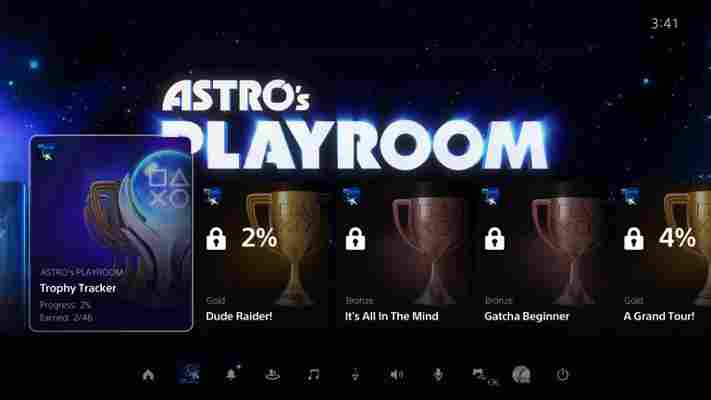
In terms of accessibility improvements, the next PS5 update will include more screen reader languages as well as mono audio for headphone users, which should help those who have unilateral hearing loss. It’s important to note that this feature can only be enjoyed when using headphones or headsets connected via USB or the headphone jack as Bluetooth isn’t supported.
Last, but by no means least, beta participants in the US and UK will be able to use voice commands to navigate their PS5 console. You’ll need to enable Voice Command (Preview) from the Settings menu, and then say “Hey, PlayStation!” followed by a command to find a game, open an app or setting, and control media playback. You’ll obviously need a microphone, so make sure you’re wearing a headset or have an appropriate USB microphone attached as the PS5 HD Camera doesn't include a mic, unlike how Microsoft's now-defunct Kinect did.
Analysis: an impressive array of changes, but there's still no VRR or 1440p support
There’s no denying that the next PS5 update brings with it plenty of improvements and changes. Users should particularly enjoy how games and apps will no longer vanish from the home screen when other titles and apps are played – and whether you like them or not, it’s always fun to see voice commands return in some capacity.
However, one notable omission is the lack of variable refresh support ( VRR ) and 1440p support . Sony had previously promised that VRR would come in a PS5 update in the future, but there’s still no sign of it. The same is true of 1440p, which is notably absent on PS5 and PS4 and means that if you connect to a 1440p monitor, the PS5/ PS4 Pro will only output at 1080p.
But why should users even care about variable refresh rate? Well, VRR is a feature that eliminates screen tear and judder and can make small frame rates dips appear imperceptible when playing games. In short, it makes games appear smoother than they actually are, and it’s been available on Xbox consoles since 2018. You’ll need a compatible HDMI 2.1 display to use it, however.
Auto low latency mode would also be a welcome addition. ALLM lets a game console send a signal to a user’s display so it automatically switches to the lowest latency setting, such as ‘Game Mode’. While most gamers will be aware of the best picture mode to use, we’ve seen countless users pick picture modes like ‘Cinema’ or ‘Movie’ which often introduce a far higher level of input lag and aren’t ideal for gaming.
It’s great to see Sony continuing to improve the PS5’s system software, but hopefully, these two outstanding issues are addressed sooner rather than later.
Via PlayStation Blog
Apple M2 chip: all the news and rumors so far
The Apple M2 processor was the talk of the town right up until the announcement of the M1 Ultra at the Apple Peek Performance event on March 8, 2022, and so it's been overshadowed for now, but where does that leave the fate of Apple's next-gen silicon?
There is apparently one more M1 series processor to come this year with the Mac Pro, which is almost certainly going to be a high-end Intel Xeon competitor, but there isn't much known about that processor at this time. So where does that leave the Apple M2?
There's definitely a lot of anticipation around the next-gen Apple silicon, considering how successful its initial efforts have been. The latest MacBook Air (2020) , 13-inch MacBook Pro (2020) , 14-inch MacBook Pro (2021) , and 16-inch MacBook Pro (2021) all feature Apple's latest chips, as well as the Apple Mac Mini (2020) and its latest 24-inch iMac (2021) . The M1 is even in the latest Apple iPad Pro (12.9-inch, 2021) and now the newest iPad Air 5 .
Of those that we've been able to review, nearly every one of them are best-in-class devices, so understandably, we're excited for what an Apple M2 chip might bring to the table with these devices.
Will the higher-end Apple M2 chips feature more powerful GPUs to supercharge the best Mac games ? That's definitely on our radar, as the new MacBook Pro devices with M1 Pro and M1 Max chips are very capable gaming devices (even if they fall short of the very best gaming laptops with dedicated RTX 3080 Ti GPUs).
How will the Apple M2 stack up against Intel Alder Lake mobile processors this year, given that both are based on Arm's big.LITTLE architecture? When might we see the new Apple M2-powered devices go on sale?
We're going to dig into all of this and more as we wait for official word on the Apple M2.
Apple M2: cut to the chase
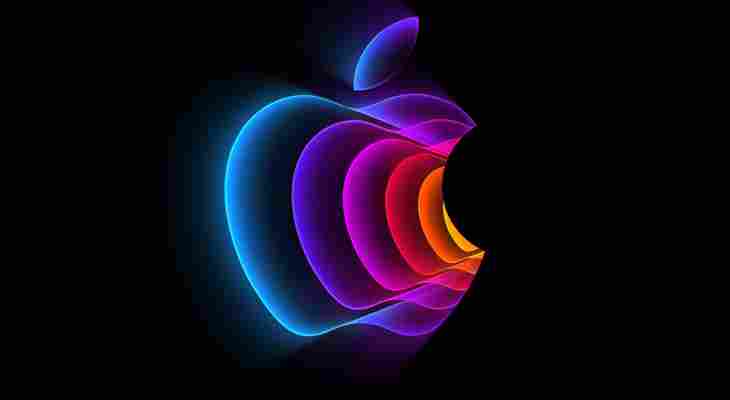
Apple M2 release date
There is no official word that the Apple M2 chip even exists, so there definitely isn't an official release date.
It will almost certainly power the next-generation MacBook Air (2022) , which we expect to see in the next few months. Whether we'll also see an Apple M2-powered 13-inch MacBook Pro is another matter.
With the recent release of the MacBook Pro 14-inch with a much more powerful processor, the case for releasing a slightly smaller MacBook Pro this soon is weaker, but not necessarily out of the question.
There's a lot of speculation that the 13-inch MacBook Pro will probably be discontinued in favor of a 14-inch MacBook Pro running the Apple M2 chip , something that might happen towards the end of 2022.
The M2 chip might also power a new Apple Mac Mini . Both the Mac Mini and MacBook Air will be two years old by the end of 2022, so a refresh can be expected as soon as the middle of the year.
We've been hearing a lot about a bunch of new Mac and MacBook releases this year , so we're definitely expecting big things on the M2 front in 2022 .

Apple M2 price
The Apple M2 won't sell on its own – although can you imagine if that was Apple's big play for 2022? That would be a trip.
No, the Apple M2 will only be sold as part of one of its products, so it's those device price tags that we'll be looking out for. And while the Apple M1-powered devices didn't end up being any more expensive than their predecessors as a result of the upgraded hardware, it might be too much to hope that the same will be true for the Apple M2.
Prices from a lot of hardware manufacturers in the past year have steadily increased. Whether we want to chalk that up to companies getting a fast one over on consumers, or it's because costs have actually gone up enough to drive up the prices on the finished products, things are just more expensive in 2022, and tech products especially so.
There's something about $999 / £999 that just hits different for a consumer than $1,099 / £1,099, so its entirely possible that Apple will keep its entry-level M2-powered MacBook Air configuration at that price point.
Other configurations might be a bit more expensive to compensate, though, and the MacBook Pro devices are likely to see an across-the-board price increase. If you're a professional user, Apple won't have any qualms passing on that price increase to you.
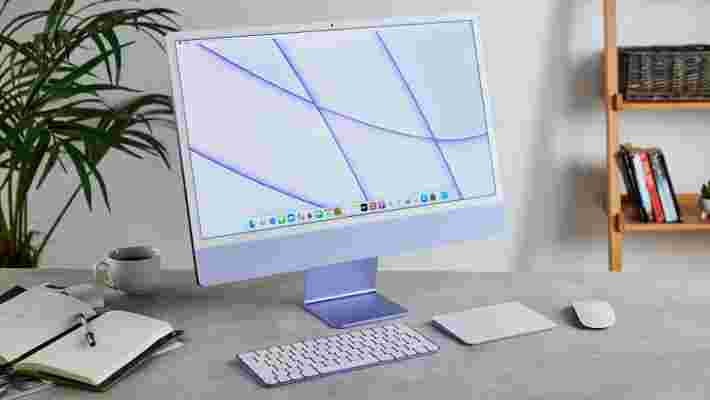
Apple M2 specs and performance
While the number might be bigger, we're not expecting the Apple M2 to outperform the most recent M1 Pro and M1 Max chips.
Those two were specifically made for professional workstations (it's called the MacBook Pro after all), and it looks for all intents and purposes that the MX designations will power consumer devices, while the MX Pro and MX Max chips will power the higher-end workstations.
This will likely only matter in terms of the graphics and neural processing components of the SoC, which a MacBook Air or an iPad Pro don't need nearly as much grunt as a MacBook Pro used for video editing or 3D modeling work.
Still, we expect that the Apple M2 chip will have at least eight cores (4+4) with an even mix of performance and efficiency cores. It is possible that the M2 processor will have as many cores, though, but not one as powerful as last year's M1 Pro and M1 Max.
The reason why we think there will be a bump up in the processor core counts is all about Intel Alder Lake. With the release of Intel's latest mobile processors, Intel has a highly competitive product to go against Apple's silicon in the consumer laptop market. Without Alder Lake, Apple could probably get away with the same number of cores, but make some changes around the edges and call it a day.
With Intel Alder Lake mobile chips featuring up to 12-cores / 20 threads, the Apple M2 will need to work a little harder to keep pace with Intel's chips, as both companies move aggressively to shore up their laptop market share in 2022.